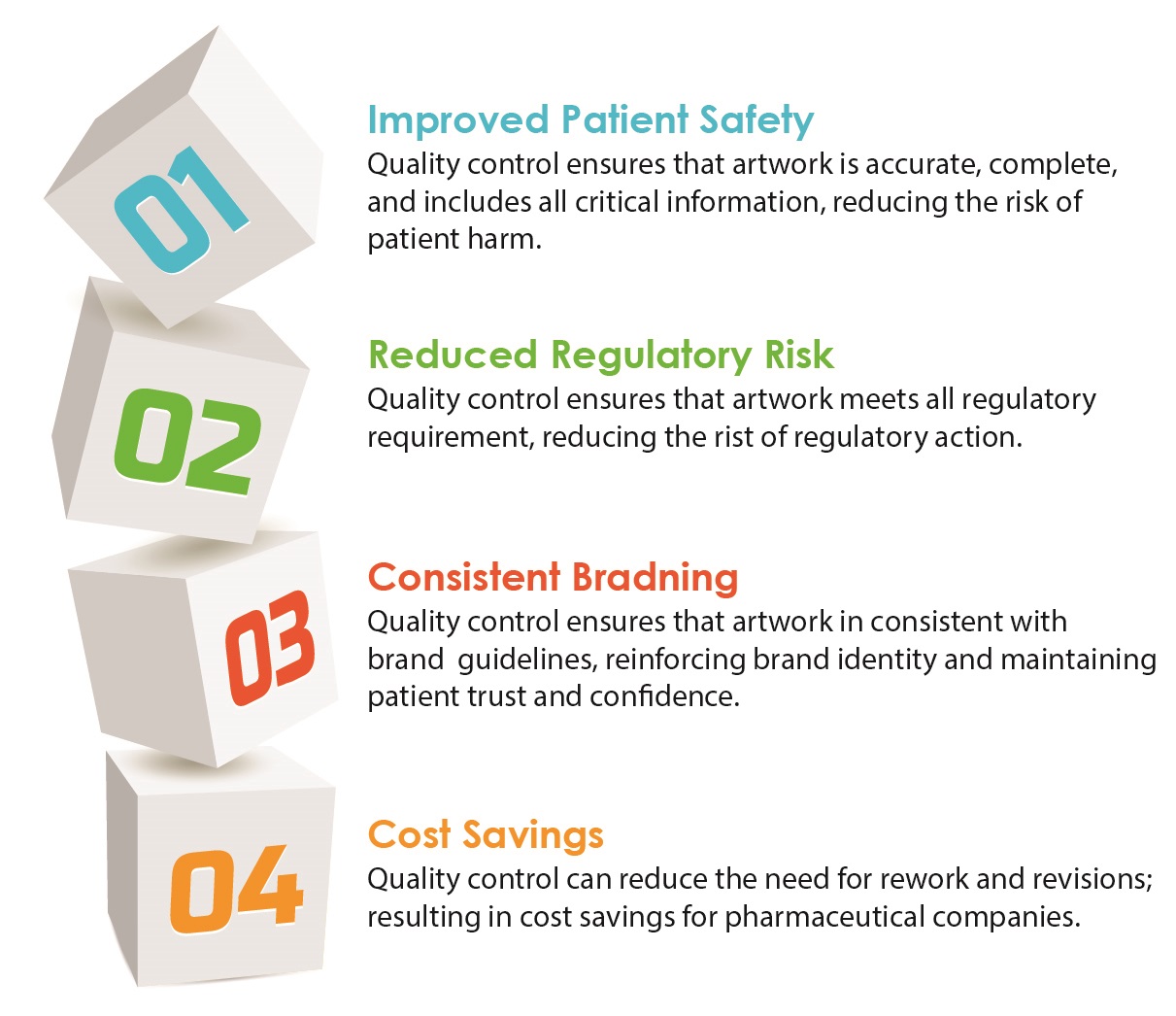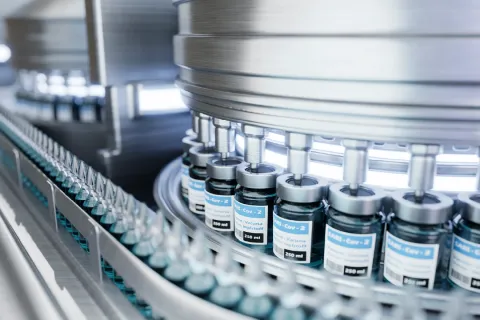
Regulatory artwork services form a critical component of the Pharmaceutical industry, ensuring that the packaging artwork of medicinal products is accurate, complete, and compliant with the Regulatory requirements.
Quality control is an essential aspect of Regulatory artwork services, as errors or omissions in artwork can have serious consequences for patient safety and Regulatory compliance. Here we explore the importance and benefits of quality control in Regulatory artwork services.
What is Quality Control in Regulatory Artwork Services?
In addition to ensuring that the artwork is accurate, complete, and compliant, involving checks to detect errors and omissions, as discussed above, quality control ensures that the artwork is consistent with brand guidelines and it meets the intended purpose.
Why is Quality Control Important in Regulatory Artwork Services?
Quality control is essential in Regulatory artwork services for several reasons. Some of the key reasons are the following:
- Patient Safety: Errors or omissions in artwork can seriously impact patient safety, as mentioned earlier. For example, missing/incorrect dosage instructions, drug interactions, or warnings could result in harm to patients or even death.
Let us say a medicinal product packaging artwork contains a typographical error in the dosage instructions, mistakenly indicating that patients should take twice the intended dose. Such an error is severe and could lead to serious harm or death. Quality control helps prevent these types of errors by ensuring that, first, all critical information is included in the artwork and, second, that it is accurate.
- Regulatory Compliance: Regulatory Agencies impose strict requirements for drug packaging artwork, and failure to comply with the requirements can result in Regulatory actions, such as product recalls or fines.
For example, the United States Food and Drug Administration (US FDA) requires all prescription drug labeling and packaging to include certain warnings, precautions, and other information. If an artwork does not meet these requirements, it could result in Regulatory action such as product recalls or fines, as mentioned above. Thus, quality control ensures that the artwork meets all the Regulatory requirements, thereby reducing the risk of non-compliance.
- Brand Image: Drug packaging artwork is an important element of drug branding and can influence patients’ trust and confidence in a medicinal product. Poor artwork quality or inconsistent brand guidelines could damage the brand’s reputation, resulting in decreased sales and market share.
Thus, quality control reinforces brand identity and maintains patient trust and confidence.
Benefits of Quality Control in Regulatory Artwork Services
Quality control provides several benefits for pharmaceutical companies, which are represented in the figure below (Figure 1).
Figure 1: Benefits of Quality Control in Pharmaceutical Companies

Source: Created by the author
How is Quality Control Conducted in Regulatory Artwork Services?
Quality control is conducted through a series of checks and reviews throughout the artwork development process. An overview of these checks is provided in the figure below (Figure 2).
Figure 2: Checks and Reviews in the Quality Control Process

Source: Created by the author
To conclude, quality control is a critical element of Regulatory artwork services in the Pharmaceutical industry. Ensuring patient safety, Regulatory compliance, and brand image are the major reasons for implementing quality control measures in the creation and approval of drug packaging artwork.
With the increasing demand for new medicinal products and the complexity of Regulatory requirements, it is more important than ever for pharmaceutical companies to prioritize quality control in their artwork services. By implementing effective quality control measures, companies can reduce the risks of errors, minimize Regulatory actions, and maintain brand reputation and patient trust.
In addition, the use of technology such as automated proofreading and review tools can help streamline the quality control process and improve accuracy and efficiency.
Pharmaceutical companies should continually evaluate and improve their quality control processes to ensure that their artwork services meet the highest standards of quality, safety, and compliance. Ultimately, this will benefit not only companies, but also patients who rely on the companies’ medicinal products for their health and well-being.
A Regulatory expert with prior experience in delivering 100% quality artwork will be the right partner of choice. Click here to understand Freyr’s Regulatory artwork capabilities for the Pharmaceutical industry.









